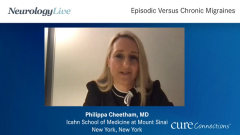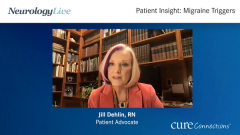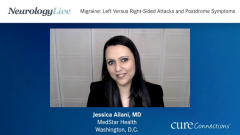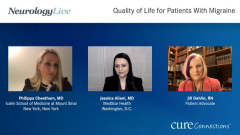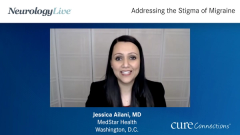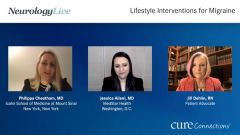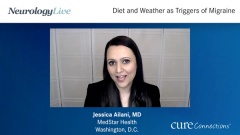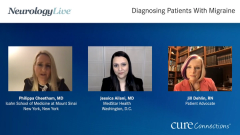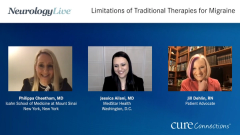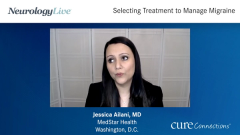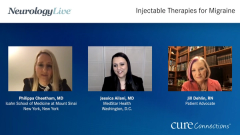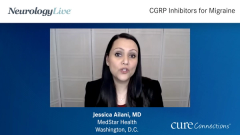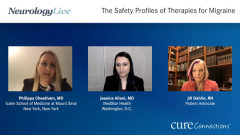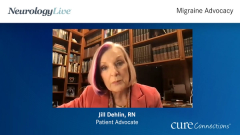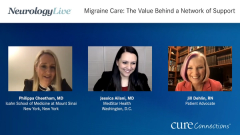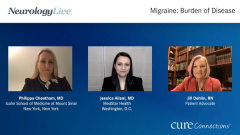
Addressing the Stigma of Migraine
A panel of healthcare professionals and patient advocates with migraine recognize the social stigma associated with the condition despite its prevalence in the community.
Episodes in this series

Philippa Cheetham, MD: You have talked about the stigma that patients with migraine face. Can you give any examples over the years where you may have shared a story about having a particularly bad day and had maybe not quite the sympathetic response from friends or colleagues that you had hoped for?
Jill Dehlin, RN: When I first became chronic, I was either in prodrome—in the attack phase—or postdrome every single day. I was also working on earning a PhD. I was in the dissertation phase, and a colleague of my husband patted me on the hand, and she said, “Oh, it’s just stress. You finish your PhD program, or maybe you should just drop out because it is just stress.” That was really minimizing what I was going through and what I was trying to accomplish. I have also had people say, “Well, I had a bad headache once, and I am doing OK.” Then there are the folks who want to help, and they’re so well-meaning, but I used to get so annoyed with people when they would come up with some vitamin complex that they thought would help me or a special kind of smoothie with ingredients that I knew I would react to. Somebody told me 1 time to put a banana peel on my forehead, that that would help ease my migraine. You cannot laugh. You just have to say, “Thank you, and what is the efficacy of this particular thing that you’re recommending?”
Philippa Cheetham, MD: That is right. It is really phenomenal that the Global Burden of Disease Study 2010, conducted by the Global Burden of Disease Collaborative Network, stated that migraine was the third-most prevalent disorder in the world. When you think about the effect that this must have on workforce productivity, family dynamics, and work stress, that is quite a statistic, isn’t it, Dr Jessica] Ailani? Certainly, when thinking about people experiencing these kinds of acute, severe attacks when they may be on the highway or operating dangerous machinery or being responsible for young children, it’s really quite frightening, isn’t it? There is the possibility that someone may have a heart attack behind the wheel of a car or have a very sudden visual disturbance, or they experience vomiting or severe headache. These are potentially very serious situations. This is a big problem.
Jessica Ailani, MD: Yes. You are talking a lot about cars and these situations. To me, the stories that never leave me are the stories of my patients and what happens to them while driving. It is a very disabling disease. I cannot tell you how many of my patients have described how they manage vomiting in their car while driving in traffic, and it is horrifying. It is horrifying to have to hear this story because, as their clinician, I am like, “How did I not come up with a better option for you?” The truth is, usually they are stuck driving without water, without their treatment, or without a way that they can stop or pull over because they are in the middle of a 6-lane highway at rush hour. They may lose vision, and their 2 young children are in the back seat. I have heard of every type of scenario.
The study you mentioned was conducted again in 2019; the Global Burden of Disease Study 2019 marked migraine as the second-leading cause of years lived with disability. It is hard to think of migraine as that kind of disabling for some people, but that is because they do not stop to think that when someone is having an attack of migraine, they no longer can function as they do in their everyday life. You cannot get up, you cannot take a shower, you cannot eat food, and you cannot go to the bathroom. I have heard stories of people crippled in the bed: It is basically a dark cave, and they cannot even pick up a phone to call for help because the light on their smartphone is too intense and they are not able to see clearly to even pick the number to dial. They’re then stuck in their bed until they feel just well enough to crawl to the bathroom to be ill.
When you realize that this is what people are going through, it helps ease and erase the stigma, but the problem is nobody wants to have to tell that story over and over again. What Jill is talking about is this sense that people feel it is OK to be intrusive because they do not think it is a medical disease, so they want to tell you what to do. lt is not high blood pressure, so they’re just going to tell you that it is OK to eat a banana every day and your blood pressure will be fine. Perhaps people do that—I do not know because I do not treat hypertension—but we hear this a lot. It is well-meaning. Jill, you have a really great response, to thank people and move on. Still, it can be very disruptive to the care of a migraine patient, because when people are continuing to bring that up, people stop believing it is a real disease and they go back to what you had mentioned before: “Are you sure this is migraine, doctor? Are you sure we have not missed something else? Isn’t there something else I am supposed to be doing? Perhaps this isn’t migraine.”
Philippa Cheetham, MD: Thank you for watching Neurology Live® Cure Connections®. If you enjoyed the program, please subscribe to our e-newsletter to receive upcoming programs and other great content right in your in-box. Thank you so much.
Transcript Edited for Clarity
Newsletter
Keep your finger on the pulse of neurology—subscribe to NeurologyLive for expert interviews, new data, and breakthrough treatment updates.

